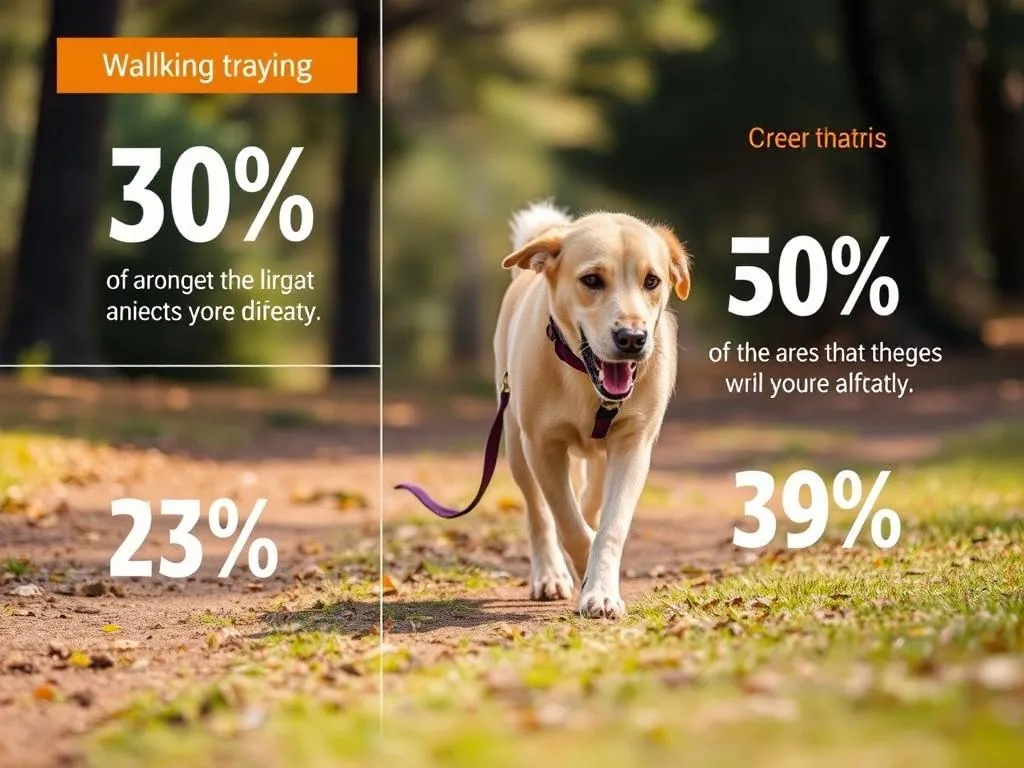
Introduction
In Australia, pet ownership is a cherished part of life, with dogs leading the pack as the most popular companion animal. According to recent surveys, approximately 40% of households in Australia own a dog, highlighting the integral role these loyal companions play in our lives. Dogs are not just pets; they are beloved family members, offering companionship, love, and support.
The importance of dog walking cannot be overstated. Regular walks are essential for maintaining a dog’s physical health and behavioral balance, providing them with the necessary exercise and socialization they need to thrive. For owners, dog walking presents numerous benefits, including improved physical fitness and mental well-being, as well as precious bonding time with their furry friends.
This article delves into the dog walking statistics in Australia, examining trends, health benefits, community impacts, and the evolving landscape of dog ownership and walking habits across the nation.
Dog Ownership Trends in Australia
Current Statistics on Dog Ownership
Australia boasts a vibrant dog ownership culture, with the number of registered dogs estimated to be over 5 million. This statistic translates to nearly one in five Australians owning a dog. Among the various breeds, the Labrador Retriever, Staffordshire Bull Terrier, and Australian Cattle Dog rank as the most popular choices among pet owners.
Demographic Insights
Dog ownership in Australia is diverse, with trends varying by age group, location, and lifestyle. Surveys reveal that:
- Young adults (18-34 years) are more likely to own dogs, often viewing them as companions and social facilitators.
- Families with children also display a high propensity for dog ownership, as dogs are perceived to positively contribute to children’s physical and emotional development.
- Urban dwellers tend to prefer smaller breeds, while those in rural areas often lean towards larger breeds that require more space to roam.
Understanding these demographic insights provides a clearer picture of how dog ownership shapes lifestyle choices across Australia.
The Importance of Dog Walking
Health Benefits for Dogs
Walking is crucial for dogs, catering to their physical and mental health needs. Regular walks contribute to:
- Physical health: Exercise helps maintain a healthy weight, reduces the risk of obesity, and promotes cardiovascular health.
- Mental stimulation: Exploring new environments offers dogs the necessary mental challenges that keep them engaged and happy.
- Socialization: Meeting other dogs and people during walks helps dogs develop better social skills, reducing behavioral issues.
Health Benefits for Owners
The benefits of dog walking extend beyond our furry friends:
- Physical fitness: Walking a dog can significantly contribute to an owner’s daily exercise routine. Research indicates that dog owners are more likely to meet recommended exercise levels compared to non-dog owners.
- Mental health: Studies have shown that spending time with dogs can alleviate stress, anxiety, and depression, improving overall mood and emotional well-being.
These mutual benefits reinforce the bond between dogs and their owners, making dog walking an essential activity for both parties.
Dog Walking Habits in Australia
Frequency of Dog Walking
On average, dog owners in Australia walk their dogs 3 to 5 times a week. The duration of these walks varies significantly based on the owner’s schedule, with many opting for short walks of around 30 minutes. However, dedicated dog owners often engage in longer excursions, especially on weekends, where walks can extend to an hour or more.
Preferred Walking Locations
Australia offers a plethora of beautiful parks and trails that are perfect for dog walking. Some of the most popular locations include:
- Centennial Parklands in Sydney, known for its expansive green spaces and dog-friendly areas.
- Royal Botanic Gardens also in Sydney, where owners can enjoy scenic views while walking their pets.
- Yarra Bend Park in Melbourne, offering a mix of trails and open spaces ideal for dogs to roam freely.
Urban areas often have designated dog parks, whereas rural locations provide more natural settings, allowing for a variety of walking environments that cater to different preferences.
Dog Walking Statistics
National Statistics
When analyzing dog walking statistics across Australia, several trends emerge:
- Approximately 60% of dog owners walk their dogs at least once a day.
- State comparisons reveal that dog walking habits vary, with Victoria having the highest number of daily walkers, while Western Australia shows a preference for less frequent walks.
Demographic Breakdown
Delving deeper into demographic variations, statistics show:
- Young adults (18-34 years) are more likely to take their dogs on longer walks compared to older demographics.
- Women are statistically more inclined to engage in daily dog walking than men, likely due to differing lifestyle and work commitments.
- Owners living in urban environments tend to walk their dogs more frequently than those in rural settings, where dogs might have more space to roam freely without structured walks.
These statistics underscore the diverse nature of dog walking habits across different segments of the Australian population.
Impact of Dog Walking on Communities
Social Benefits
Dog walking fosters a sense of community among pet owners. Regular encounters in parks and trails lead to social interactions, creating opportunities for friendships and community bonding. Many local councils also organize community events centered around dog walking, such as:
- Fun runs and walks
- Dog shows and competitions
- Meetups for dog training classes
These activities not only enhance community spirit but also promote responsible dog ownership.
Economic Impact
The economic influence of dog walking extends to local businesses. Pet shops, dog-friendly cafes, and grooming services often see increased patronage from dog walkers. Moreover, dog walking services and apps, which have surged in popularity, are reshaping the landscape of pet care, providing convenience for busy owners.
Challenges and Considerations for Dog Walking
Common Challenges Faced by Dog Owners
Despite the numerous benefits, dog walking comes with its challenges:
- Time constraints: Busy lifestyles can make it difficult for owners to find time for regular walks.
- Weather conditions: Extreme heat or rain can deter owners from taking their dogs outside.
- Safety concerns: Traffic and aggressive dogs can pose risks during walks, leading to anxiety for some owners.
Legal and Safety Regulations
Understanding local regulations is vital for safe dog walking. In most Australian states, leash laws are enforced in public areas to ensure the safety of dogs and other community members. Here are a few safety tips for dog walkers:
- Always use a sturdy leash and harness.
- Be aware of your surroundings, especially near traffic.
- Carry waste bags to clean up after your dog.
By adhering to these regulations and safety tips, dog owners can enjoy stress-free walks with their pets.
Future Trends in Dog Walking
Emerging Trends
The future of dog walking in Australia is evolving, with several emerging trends shaping the landscape:
- Dog walking apps: Services that connect dog owners with walkers have gained popularity, providing flexibility for busy owners.
- Group dog walking: Socialization programs that encourage group walks are becoming increasingly popular, allowing dogs to interact while owners enjoy companionship.
Impact of Urban Development
As urban areas continue to grow, urban planning plays a crucial role in facilitating dog walking opportunities. More cities are recognizing the need for green spaces and dog parks, which enhance the quality of life for residents and their pets. The integration of pet-friendly infrastructure in urban development plans is likely to continue, promoting healthier lifestyles for both dogs and their owners.
Conclusion
In summary, dog walking is an essential activity that benefits both dogs and their owners in numerous ways. From promoting physical health to fostering community connections, the practice of walking dogs holds significant value in Australian society. As trends evolve and the landscape of dog ownership changes, it is clear that dog walking will remain a cherished part of life for many Australians.
Encouraging more people to engage in this fulfilling activity not only enhances individual well-being but also strengthens community bonds, making Australia a more pet-friendly nation.









